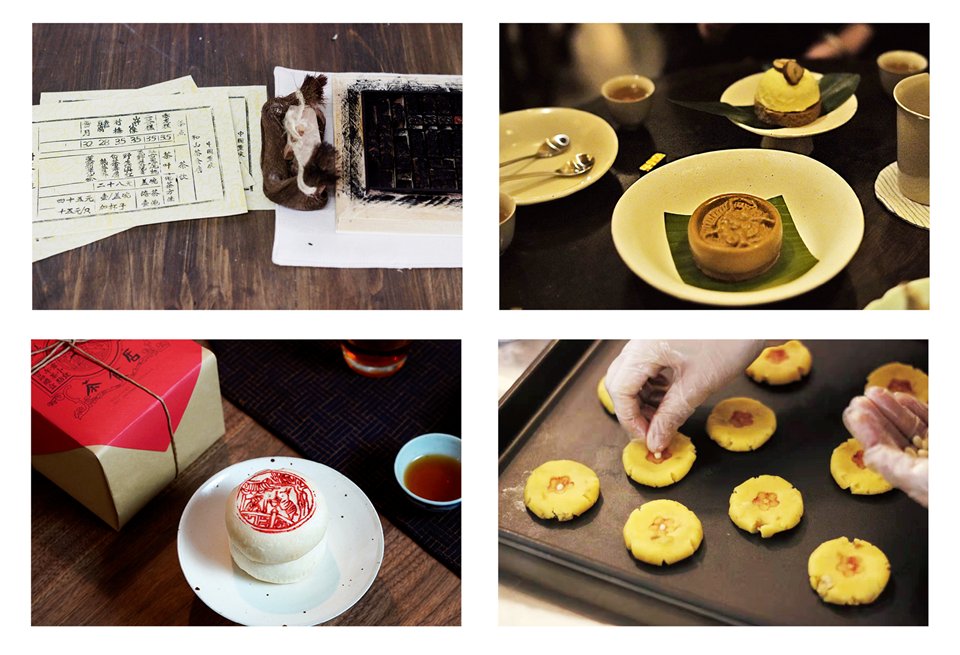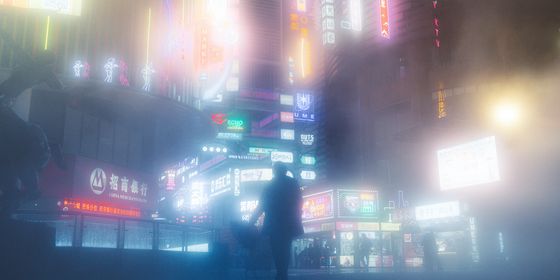A Chinese millennial couple creates contemporary Chinese sweets and designs that make a difference in daily life
Flanked by white fig trees and spicy noodle shops, Heshan Teahouse sits two floors below street level in a residential building on the southern bank of the Yangtze River. One gets there by taking a cable car across the river from the forest of skyscrapers in downtown Chongqing, looking for a shop sign that resembles a woodblock print of a few temples and pine trees atop a hill.
The teahouse is owned by Zhang Yipeng and Li Xia, a husband and wife team who both graduated from Beijing’s Central Academy of Fine Arts. Three years ago, they moved to Chongqing, Li’s hometown, to escape the monotony of work and life in Beijing, and rented and refurbished this old apartment for their business.
It’s a cozy, confined space, able to seat around 20 people at its antique wooden tables and chairs. The concrete floor and ceiling beams are bathed in the warm light cast by wire lamps hanging from the ceiling. Loose menu pages, each with an illustration and a poem that describes a certain food, sit neatly on the counter. Instead of serving sunflower seeds, peanuts, and candied fruits like most other teahouses, Heshan offers unique desserts of its own invention in the ancient tradition of chashi (茶食)—a loose term for snacks consumed while drinking tea.
A Chinese tradition as old as tea-drinking itself, chashi is believed to reduce irritations caused by the caffeine and tannins found in tea while also adding flavor to the meal. It dates back to banquets in the Jin dynasty (265 – 420), where tea replaced alcohol as the main drink and vegetarian food was served under Daoist influences. During its heyday in the Ming (1368 – 1644) and Qing (1616 – 1911) dynasties, chashi was found not only in elite gatherings but also in streetside teashops for commoners, and it became an all-encompassing term for snacks served with tea, ranging from brightly colored pastries to eggs cooked in tea brine.
Heshan’s menu features original creations like “Rain of Purple Beans,” a layer cake with mung beans and purple sticky rice; and “Plum Blossom of the Season,” a rice wine-flavored dessert in the shape of flowers found on the paving stones of the path leading to a nearby Daoist Temple. Zhang refers to the business as an experiment in aesthetics, and explains to TWOC the process of creating the menu and how Chinese elements in modern design can find their place in everyday life.
Can you share the story behind the name of the teahouse, 和山?
The name’s meaning is twofold. In The Classic of Mountains and Seas (《山海经》), there is a mountain called Heshan (和山). You can also take 和 (hé) in its literal meaning and understand it as “with mountains.” It happens that Chongqing is known as the Mountain City, so we picked this name. We also made a sticky rice and peanut cake in the shape of the mythical beast Taifeng (泰逢), who governs Heshan Mountain, and named it “Portrait of the Mountain God (山神小像).”
What made you decide to open a teahouse that serves chashi?
My wife and I both taught art and worked in design. You can say this shop is an experiment of applying our artistic training to food, an area much in need of design. Not a lot of designers are willing to enter this industry: The ones educated at fine arts academies tend to want to step into the realm of art or create things for galleries, and they think this is too trivial, that they are too good for it.
But I think we can all invest our creative energy into details. There is so much to be done by people who work in art and design. Every single corner of this city has something to do with visuals. You look at buildings, or you sit here in a chair, hold a cup or a napkin. All of those details should make you feel happy.
Pastry design is not a profession, like graphic design, but you can influence the [food] industry through art and establish something that was not there before.
How do you invent a new item on the menu?
First, we pick a theme. It could be a solar term, a season, an ingredient, something unique we found in books, or ancient architecture. For example, the shape of Red Dragon Cake is inspired by the tiles of Laojun Cave [in Chongqing]. We find a point and unite different aspects around it. We make a few trial versions, polish their look and taste, and come up with an interpretation. I am in charge of the visuals and creative elements, and there is a team of four that makes the food.
I think some things have the potential to become concepts. For example, French pastries like napoleons or operas—everyone makes their own variations under the same name. [In China] there are only moon cakes, a generic concept. Maybe some of our products can start a trend as well? If we make a double-grain cake, others can make it too, with different types of grains. It doesn’t have to be a product of this place only. I hope it will bring more diversity and open up people’s minds and make this industry more interesting.
What is the current state of the chashi industry?
In a mature industry like French patisserie, there are many different kinds of sugar and suppliers who specialize in purée and chocolate. In Japanese wagashi sweets, too, you can use a variety of high-quality bean pastes of different sweetness. In our country, your choices are limited. Right now, we have to make every ingredient from scratch. Ideally, we will be able to buy readily available ingredients.
At the moment, chashi is not an industry on its own. It is just a WeChat group: we recently started this group where people interested in tea snacks can connect with each other. There are about a dozen people in it now. It is an attempt to see if we can make designing Chinese desserts something that can last, both in this shop and beyond; if we can rally people who are interested in this and who might open their own shops and expand it, or maybe inspire people to do things their own way. For example, Western pastry in Japan has its own style, whereas in our country, people in every industry like to copy-and-paste and make fast money instead of digging deep.
What are some good examples of design in a Chinese style?
Something that finds a way to be both Chinese and modern, like putting calligraphy on labels. The Republican period had some good design. There was a natural transition when foreign cultures entered at the end of the Qing dynasty, in places that were first exposed to international influences like Shanghai or Tianjin. The posters from that period use Western language but still look quite Chinese and are different from those of the Qing dynasty. But after the Republican period, because of the wars, this trend was interrupted and lost. Perhaps part of it continues in Taiwan, Hong Kong, or Shanghai.
I.M. Pei’s architecture is great, but there is still no distinct system of Chinese architecture, with prominent styles or textures that stand out and influence others.
In terms of visuals with strong national features, the best example is still Japan. Japanese architecture has its own style, distinct from the US, Europe, or China. You take one look at it, and you know it’s Japanese. From urban planning to architecture to details like crockery, they have developed a comprehensive language of their own.
Can you give some examples of detail-orientated design projects that will make a difference to people’s daily life?
I have a few projects in mind. For example, there is a well on the hill here that’s been in use for many years. The space around it is messy, with no planning involved at all. Maybe we can give the well a name, and clean up its surroundings through some kind of design.
I want to find some points of interest, fun, creativity, and use them to create a special kind of output through design. This could also be interdisciplinary, so one of my old classmates who is a painter might contribute something, or if you are a graphic designer, you could pick a theme and do the design. We can have a series of these projects and keep creating new points of interest through them. In the process they might bring us some new reflections on art, visuals, and aesthetics in everyday life.
Photos courtsey of Zhang Yipeng
How a Chongqing Teahouse Fuses Art and Dessert is a story from our issue, “Something Old Something New.” To read the entire issue, become a subscriber and receive the full magazine.














